

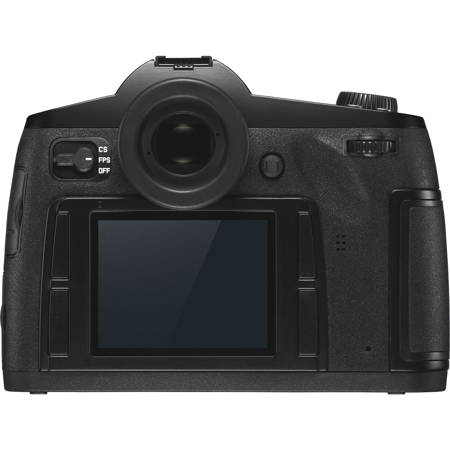
This item is no longer available.
Review Summary
Accidents happen where life happens. Protect your favorite Adorama products and purchase a protection plan to stay covered from accidental damage, mechanical or electrical failure, and more.
If we can’t fix it, we’ll replace it at no additional cost.
Protect your product from drops, spills, and more.
Enjoy your gear without fear. We have you covered!
When regular use of your product over time results in mechanical or electrical failure.
We will never charge you a deductible after the purchase of a plan.
Our claims process is simple & easy and our customer service team is happy to help.
Adorama Protect powered by Extend is available for purchase to customers in the United States. Not available for purchase Internationally or in U.S. Territories.
Browse our FAQ
Leica CMOS-Sensor with microlenses
30 x 45 mm (Leica ProFormat)
3:2
64 Mio pixel
4,6 microm
Up to 15 f-stops
14 Bit per pixel
sRGB/Adobe RGB/ECI RGB 2.0
Presets: daylight, clouds, shade, tungsten, HMI, neon warm, neon cool, flash, gray card, LiveView gray card, autoWB, color temperature (Kelvin)
No (for maximal detail transfer)
On sensor
Workflow software
ISO 100, ISO 200, ISO 400, ISO 800, ISO 1600, ISO 3200, ISO 6400, ISO 12500, ISO 25000, ISO 50000, autoISO
Meta-Data Copyright Information
Leica S mount designed for Leica S lenses
0.8 equivalent to 35 mm format
Predictive TTL autofocus with central cross sensor and phase detection
AFs (single) = AF single, AFc (continuos) = predictive AF continuous, manual override
Shutter release button, joystick
Via lens with electronic focusing aid
TTL (through the lens)
Multifield (5 field), center weighted, spot (3,5 %)
Shutter release button, joystick
(2,5 and ISO 100)
Spot: EV 2,7-20, multifield and center weighted: EV 1,2-20
P: full automatic (with manual exposure shift), T: exposure time priority, A: aperture priority, M: manual exposure control
+/- 3 f-stops (half steps)
3 or 5 exposures. 1/2, 1, 2, 3 f-stops
Focal plain shutter, central shutter with Leica CS lenses
Microprocessor controlled metal blades
Single, Continuous, Interval, Selftimer 2 s/12 s (with mirror-up)
8 min (depending on ISO) up to 1/4000 in half steps
Up to 3 fps
Two-step
2 s or 12 s with mirror up
Provided
Cine 4K and Full HD with full sensor width (large-format video)
Full HD: 1920 x 1080 p, Cine 4K: 4096 x 2160 p
Full HD: 24, 25, 30 fps, Cine 4K: 24 fps
MOV (Motion JPEG)
4:2:2, 8 Bit
Manual/auto
Manual/auto
Stereo microphone in camera, 48 kHz, 16 bit
Audio-In (3,5 mm phone jack), Audio-Out (3,5 mm phone jack) via Leica Audio-Adapter S
Internal
Focus peaking, clean uncompressed 8 bit 4:2:2 HDMI video stream dedicated for external HDMI recorders
Up to 60 fps
Manual. AF-field can be positioned variable
Multifield, center weighted, spot (linked with the AF field)
Provided
Histogram with clipping, focus peaking, horizon, setting information
Pentaprism Viewfinder with high eyepoint-eyepiece, illuminated LCD-information
0,87 (at 70 mm, infinity, 0 dpt.)
Approx. 98 %
-3 to +1 diopter
Changeable, standard with AF cross and spot field (scope of delivery), grid screen, micro prism screen
Horizon, exposure time, exposure metering mode, aperture, flash status, exposure balance, flash synchronization, indicator, focus indicator, exposure metering method, exposure compensation, remaining shots (on storage medium), buffer, warnings, ISO
3" brilliant TFT LCD
921,600 pixels
sRGB, 16 million colors
1
170 Degree
Corning Gorilla Glass
Monochrome LCD
Lemo Flash-Sync. Hot shoe with middle and control contacts
1/125 s.
Up to 1/1.000 s
HSS function up to 1/4000 s (with supported external flash units)
Start/end exposure
Single, Continuous, Interval, Self-timer 2 s with mirror-up function, Self-timer 12 s with mirror-up function
DNG lossless compressed, DNG+JPEG
DNG: approx. 70 MB (depending on image content and ISO), JPEG: approx. 2-30MB (depending on resolution, image content and ISO)
Up to 3.0 fps
DNG lossless compressed up to 15 images, JPEG no limit (depending on memory medium, exposure time and ISO)
CF cards (max. UDMA 7), SD-/SDHC-/SDXC- < 512 GB memory cards UHS-I (recommended), UHS-II, 4K video recordings can only be stored on SD cards (UHS-I)
Full image, histogram with clipping, focus peaking, image information
English, French, German, Spanish, Italian, Japanese, Chinese traditional, Chinese simple, Russian, Korean, Portuguese
Update via memory card
Provided
802.11n standard, integrated in camera, camera and picture control via smartphone or tablet app
GPS auto time and date or manual
Sensitivity < 1 Degree (0-40 Degree temperature)
Lemo USB 3.0 SuperSpeed
HDM Type C
Audio-Adapter (Audio-in, Audio-out, Time-Code)
Lemo Flash-Sync
Lemo Cable Release
For Multifunction Handgrip S
Leica Battery S BP-PRO1, Lithium-ion battery 7.3 V, 2300 mAh
Leica AC-Adapter S for Leica S (from Typ 007) (available as accessory)
Leica Quick Charger S. Inputs: 100-240 V AC, 50/60Hz, 12/24 V DC Output: 7,2 V DC, 1250 mA. Leica Professional Charger S
Magnesium body anti-slip rubberized, magnesium top plate, aluminum bottom plate, stainless steel bayonet and operation elements
0 to +45 Degree C, 15 %-80 % humidity
Provided
1/4" and 3/8" with anti-twist locking pins
6.30 x 3.15 x 4.72" (160 x 80 x 120mm)
Approx.: 40.51 oz (1.260g) (without battery)
16.79 Wh
4022243108325
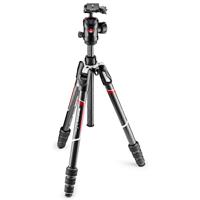

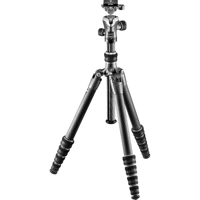
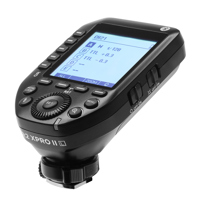
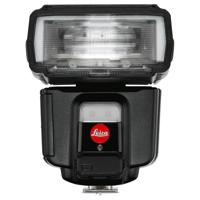
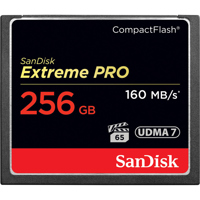


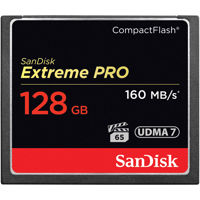
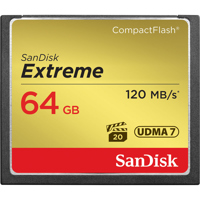
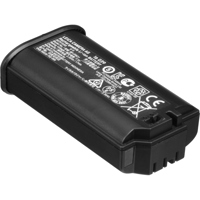
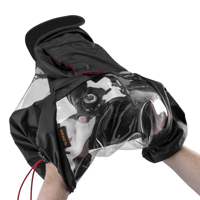
The excellence of the Leica S3 is the result of an extremely well-thought-out overall system. All of its individual components are precisely matched to one another and interact in perfect harmony to create the inimitable Leica look. Developed in close collaboration with professional photographers, the S3 expertly fulfils their particular needs - with its exceptional picture quality and outstanding flexibility, paired with uncomplicated handling and extreme robustness.
All components of the Leica S3 - from the lenses and the body to the sensor - are precisely matched to one another. The S3 and its lenses are manufactured with the utmost care in Germany. This unique system has been created by Leica to fulfil only one purpose: the maximisation of creative freedom to ensure that the decisive moment is never missed.
Sensor Pictures with depth
The S3 features the next generation of the Leica ProFormat sensor, now with 64-megapixel resolution. With dimensions of 30 x 45mm, it corresponds to the aspect ratio of the classic 35mm format, while offering a light sensitive surface area that is larger by 56%. This change not only had a positive influence on image quality, but was also a significant factor in achieving the characteristic medium format look of pictures shot with the Leica S3.
How light is handled by the system plays a decisive role in the creation of the visual signature and imaging quality: a larger sensor requires lenses with a wider image circle. They deliver not only the considerably narrower depth of field typical for medium format lenses but, in addition, due to their constructional characteristics, do not need extremely large apertures to enable a large amount of light to fall on the sensor. At the same time, thanks to the larger sensor size, every single pixel is larger, captures more light and is thus able to process this extra light in an optimum manner.
The Leica ProFormat therefore represents an ideal balance between image quality and creative capabilities for a broad spectrum of photographic applications and uses the ideal synthesis of 35mm and traditional medium format.
The sensor of Leica S3 not only delivers impressive resolution, it also increases dynamic range to discernibly more than 15 stops and thus displays a previously unparalleled tonal range between shadows and highlights. Thanks to the high sensor sensitivity of up to ISO 50000, the Leica S3 need not be reliant on studio lighting. Whether on location, shooting a reportage project, or at weddings - whenever available light is to be used 6 the Leica S3 reveals its strengths and highlights the advantages of the larger format. In addition, the CMOS sensor enables video recording and Live View as added extra alternatives to the optical viewfinder image.
Autofocus Fast to the point
The revised and improved predictive autofocus system of the Leica S3 always looks one step ahead. The lens and the camera act together as a perfect unit that takes the most direct way to sharp images. The autofocus is designed to quickly yet smoothly move to optimum image sharpness and can even incorporate corrections made in the very last fraction of a second. In a way that is absolutely essential for dynamic photography, it recognises all movements of a subject during the focusing process.
Medium format video Movie magic
With its Leica CMOS sensor and Maestro II series image processor, the Leica S3 has all the essential technology for shooting professional video footage in 4K cinema resolution and full-HD.
The full width of the sensor is leveraged at every resolution, which also lends video recordings the special look familiar with photos in medium format.
The horizontal perspective remains identical, whether shooting still or moving pictures. The exceptional image quality and the characteristic signature of the S-Lenses lends video recordings a unique cinematic flair. Thanks to selective focus and the characteristic Leica bokeh, moving pictures shot with the camera are just as breath-taking as stills.
The high quality of the movie shots is retained by virtue of 4:2:2 color subsampling and files store in MOV format complete with time code. Thanks to Motion JPEG compression of the video files, the frames already work on a stand-alone basis. Therefore, this format is ideal for film editing even before conversion. As an alternative to internal video recording with a resolution of up to 4K cinema, the Leica S3 also offers an uncompressed stream in full-HD resolution that can be viewed on a connected monitor or recorded using an external HDMI recorder.
When shooting video with the Leica S3, users can not only choose from the entire range of S-Lenses, but can also mount lenses from other medium format systems with appropriate adapters. The Leica S3 offers various focusing aids for achieving optimum sharpness during manual focusing, which is typically employed when shooting films. Using Focus Peaking to display sharp areas of the image is, for instance, a practical aid for identifying points of optimum sharpness. The optional clipping display and the showing of grids complete the range of tools available when recording videos. For moving pictures, 48 kHz,16-bit stereo sound can be recorded with the integrated microphone or an off-camera microphone with automatic or manual level adjustment.
Lenses Pure precision
The lenses are crucial when it comes to the quality of any camera system. All S-System lenses have been built to achieve nothing less than maximum optical performance. Perfect reproduction of colors and skin tones, unrivalled contrast rendition, precisely defined planes of focus and harmonious bokeh; the image quality is always perfect regardless of the aperture or focusing distance.
This is because Leica draws on more than a century of expertise, employs high-quality materials and naturally utilises cutting-edge manufacturing technologies that go hand-in-hand with precise manual craftsmanship. This gives rise to lenses that redefine the boundaries of what is technically possible.
Simply by changing a setting on the main switch of the Leica S3 users can decide before every shot whether they wish to use the metal-bladed focal plane shutter integrated into the camera or the central shutter in the lens. With its fastest shutter speed of 1/1000 s, the Leica central shutter available for many S-Lenses offers photographers significantly greater creative leeway when working with professional flash systems for the suppression of ambient light or as fill lighting when using larger apertures on location. By way of comparison, the fastest sync speed offered by the focal plane shutter is 1/125 s. The central shutter thus expands the photographer's creative scope by no less than three stop increments.
In case photographers already own medium format equipment, the Leica S-Adapters offer existing lenses a new lease of life. The Leica S3 masters the electronic settings of most third-party lenses such as autofocus and aperture at least as well as the systems for which they were designed. It raises the resulting image quality, however, to the level of a state-of-the-art digital medium-format camera.
DNG
The image data captured by the Leica S3 can be saved in the future-proof DNG format (Digital Negative) - the only standardised cross-brand format that is not tied to a specific RAW data converter and can be read by the majority of image processing software packages. This means that the Leica S3 can be seamlessly integrated into every existing working environment.
DNG format not only allows the saving of all image data with lossless compression, but also all metadata for each exposure - for instance the focusing distance and the aperture. All data can be saved either to an SD card (SDXC), a CF card (UDMA7) or directly to an external storage medium (e.g. a PC).
Workflow
The Leica S3 provides a free choice of workflow. Perfectly matched to the needs of the camera, the Leica Image Shuttle software ensures an efficient and professional photographic workflow in which all relevant image properties such as subject composition, framing, sharpness and exposure can be viewed and assessed on larger monitor screens.
The Leica S3 features a Lemo USB 3.0 SuperSpeed interface that enables fastest-possible and stable transfer of data to a computer, simultaneously providing tethered shooting capability. When used in combination with iOS devices, it also enables the establishment of a wireless connection to the Leica S3.
Alternatively, tethered shooting workflows can also be realised with other software solutions. Adobe Photoshop Lightroom Classic is fully equipped to serve as a control centre for all digital image processing needs. Everything has been thought of from importing files, sorting (including definition of keywords) and image processing, to exporting files and sharing pictures by email or on the web. The extremely powerful digital image processing tools in Lightroom Classic are perfectly designed for processing images for further use. Lightroom Classic offers the particular advantage of a non-destructive RAW workflow that leaves the original data untouched and stores all edits in a separate file. A new file with all edits applied is only created in the export phase, so there is no risk of overwriting the original data when creating several versions of the same image. Classic digital image processing software such as Adobe Photoshop can be integrated into the workflow for further processing.
Join VIP PRO
Earn 2X Points + Exclusive Perks!
Request a Callback
Chat one-on-one with an expert
Sell or Trade your Gear
Get started in 3 easy steps